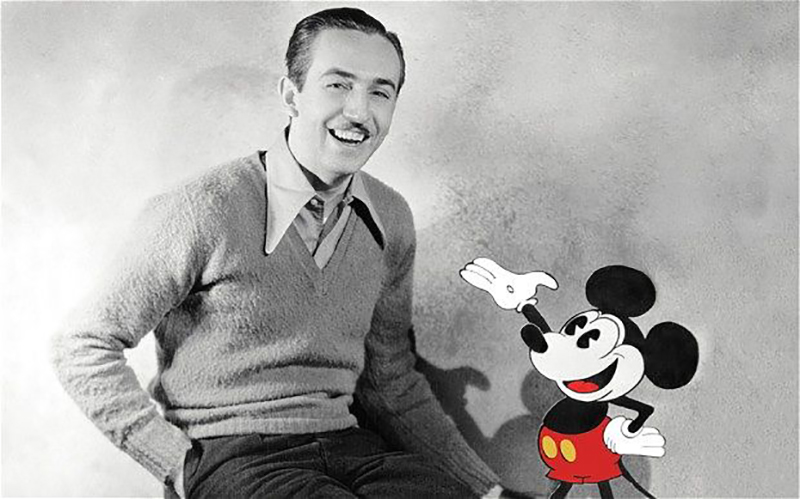The Journey of Walt Disney
May 14, 2017

Since the turn of the 20th century, only a handful of people have had a greater impact in the entertainment industry and popular culture than Walter Elias Disney. He came up with game-changing ideas, including the first ever cartoons with corresponding sound. He also created the first animated film and theme park. He created a globally accepted icon, Mickey Mouse, which is still being culturally embraced until today. The journey that shaped this great movie mogul and his great empire was much more intricate.
The childhood of Walt Disney was very complex. He had an authoritarian father who never thought twice about disciplining Walt and his brother Roy. Walt started drawing at a young age and he found relief and distraction from his father through drawings. During World War 1, he could break free from his father as he joined the Red Cross Ambulance Corps and he was shipped to France.
When the war ended, he relocated to Kansas City, Missouri and took a job at the Kansas City Star newspaper. He was later fired from the paper for his “lack of creativity”. (Years later, The Walt Disney Company would buy ABC which owned The Kansas City Star.) He never found much joy in advertising so he turned his garage into a studio, borrowed some equipment and began making his own shorts called Laugh-O-Grams. It was a difficult task to convince local theater owners to show it. But in 1922 things went terribly wrong. The distributor began to cheat Disney out of his money causing the new filmmaker to fall short on the funding needed to cover his finances. Faced with mounting debts and no money to pay his bills, Walt Disney filed bankruptcy in 1923. He left his apartment and began sleeping in his office, where he survived by eating cold beans.
When he moved to Los Angeles in 1923, he teamed with his older brother Roy, who was a business man. Roy helped him to manage his business and with his help, he started to make some money.
Oswald the Lucky Rabbit, his first ever commercial successful creation, was stolen from him. He ignorantly allowed the distributor to write the copyright under his name and not the Disney name.
He forever regretted that decision. After that incident, he made sure that all his ideas and creations were closely monitored and that he would be the only one to have absolute control.
Ublwerks, an illustrator and a friend from Film Ad, alongside Roy, helped Walt create a new character and they named it Mickey Mouse. The two early cartoons that were released were relatively successful. In 1928, they released “Steamboat Willie” which helped them breakthrough in the market. The soundtrack that was used for “Steamboat Willie” was immediate sensation. The cartoon had its first debut in Manhattan and after the show, The New York Times described it as ingenious, while the Variety gave it a rave review.
Creating animation can be time consuming, risky and very costly. In 1937 “Snow White” was released. It became Hollywood’s first full length film and it held that position for 3 years. For all his hard work, he was given a special Academy Award.
After the success of “Snow White” many other films were also produced such as “Pinocchio”, “Fantasia”, “Dumbo” and “Bambi”. Each of these films was equally successful and this added more to his reputation. He began making nature documentaries and live action films like the “Treasure Island” and “20,000 leagues under the sea”. He was also the first Hollywood Studio head to embrace the new medium of television, with "The Mickey Mouse Club" and "Walt Disney Presents."
He had a childhood dream of creating an amusement park where he could create all the characters in his head, but he had problem getting money for the project. In the early 1950s, he put a mortgage on his stock holdings, life insurance, house and furniture in order to be able to buy an orange grove near Anaheim, California and to start building on the 185 acre amusement park. It was officially opened in 1955 and it quickly became a tourist attraction. It was given the nickname “The Happiest Place on Earth.” He had finally created a real-life version of his fantasy which he always dreamt of as a boy.
In the early 1960s, he was the head of a family entertainment empire but his desire and ambition only grew when he bought an extra 27,000 acres of land near Orlando. Unfortunately, he was not able to complete his dream and he died of lung cancer in 1966 at the age of 65.
On October 1, 1971, five years after the great Walt Disney passed away; Disney World had its grand opening. During the dedication ceremony, someone turned to Mrs. Walt Disney and said, "Isn't it a shame that Walt didn't live to see this?" Mrs. Disney replied, "He did see it, that's why it's here."
comments powered by Disqus